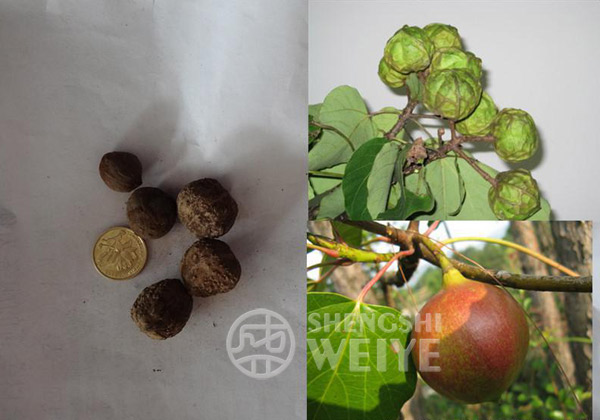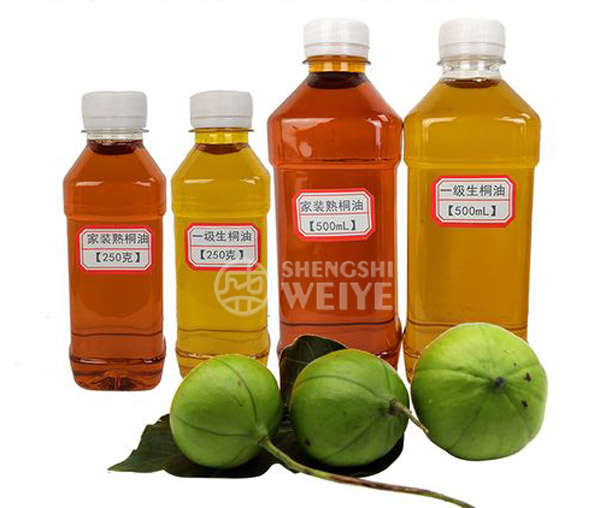Shantongzi is a kind of plant, also known as chair, water wax gourd, water wax tree, chair tree, chair tree, doushuanghong, Latin name: Idesia polycarpa Maxim; The branchlets are cylindrical, thin and brittle, yellowish brown, with obvious lenticels. In winter, the lateral branches are longer than the top branches, the branches are flat, nearly whorled, and the crown is oblong. The branches of current year are purple green, with long yellowish hairs; Winter bud has light brown hair, flowers are unisexual, dioecious or hybrid, yellow green, fragrant, petals missing, arranged into terminal drooping panicle, peduncle has pubescence, peduncle is small, seeds are reddish brown, round. It grows in the deciduous broad-leaved forest and coniferous broad-leaved mixed forest on the hillside and depression of low mountain area with an altitude of 400-2500 M.
The fruit and seed of Jatropha tomentosa can be used to extract oil. According to the determination, the oil content of Jatropha tomentosa is generally 22% - 26%, in which the oil yield of fresh fruit is 10% - 12%, and the oil yield of dry fruit is 26% - 47%. Because of its high yield and high oil content, it is praised as "tree oil depot" by many people. It can not only replace tung oil as industrial oil. It's edible. Its oil contains oleic acid, linoleic acid, linolenic acid and other unsaturated fatty acids which are beneficial to human health. Its total content is as high as 82%. In particular, linoleic acid content is as high as 66%, which is significantly higher than that of sesame oil and peanut oil. Scientific research has confirmed that unsaturated fatty acids belong to fatty acids that cannot be synthesized by human body and must be supplemented from daily diet.
The extraction process of tung oil is as follows
Tung tree → peeling → crushing → oil exploitation → filtration → crude oil exploitation
Tung oil refining process: crude oil → degumming → deacidification → decolorization → deodorization → refined oil
Product Description:
According to the different requirements of customers, such as crude oil type, daily processing capacity, oil standard and so on, the specifications, number of refining tanks and product price are different.
Can undertake:
1-500 T / D soybean, rapeseed, peanut, sunflower and other pressing refining production line
1-500 T / D corn germ, Zanthoxylum, walnut oil, rice bran oil pressing and refining production line
1-500 T / D tea seed, walnut, almond, cottonseed, sesame and other pressing and refining production line
Product advantages: through dephosphorization, decolorization, deacidification, deodorization and other processes, the crude oil can reach the specified quality standard of edible oil. After refining, the refined product oil has clear color, no mucus, no deterioration and no peculiar smell after long-term storage.




